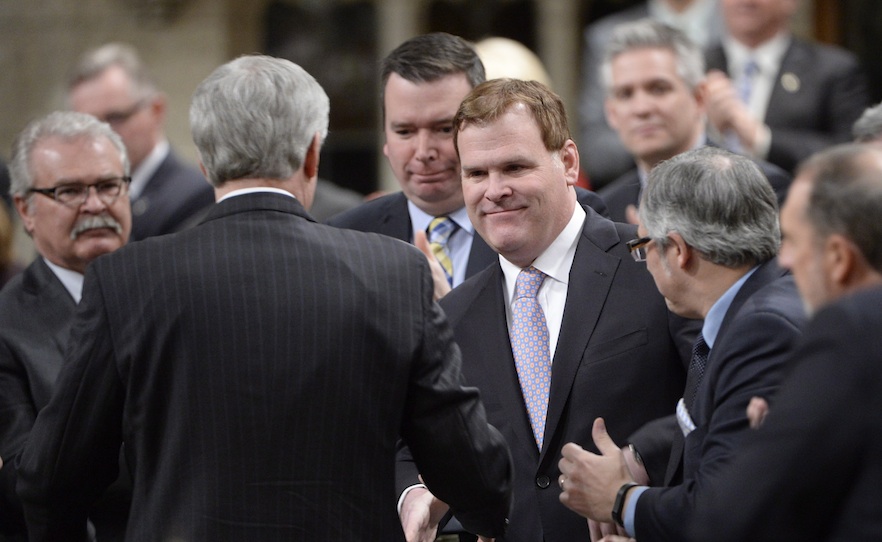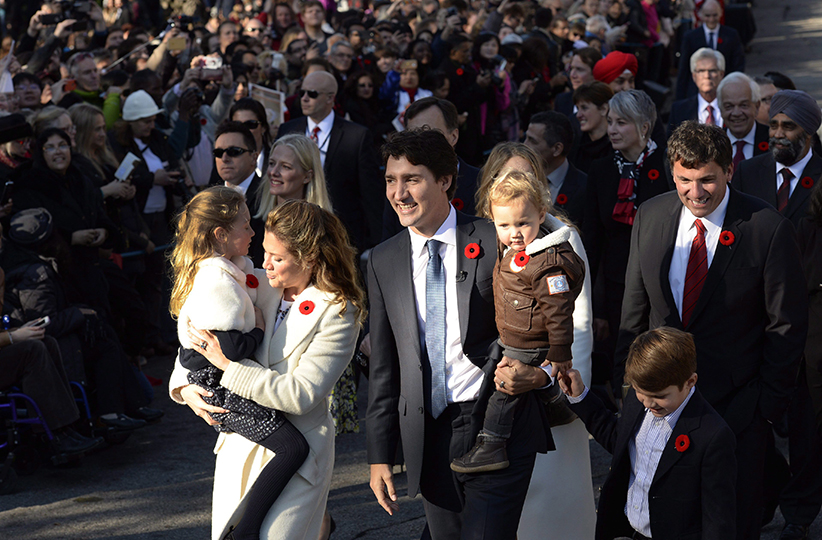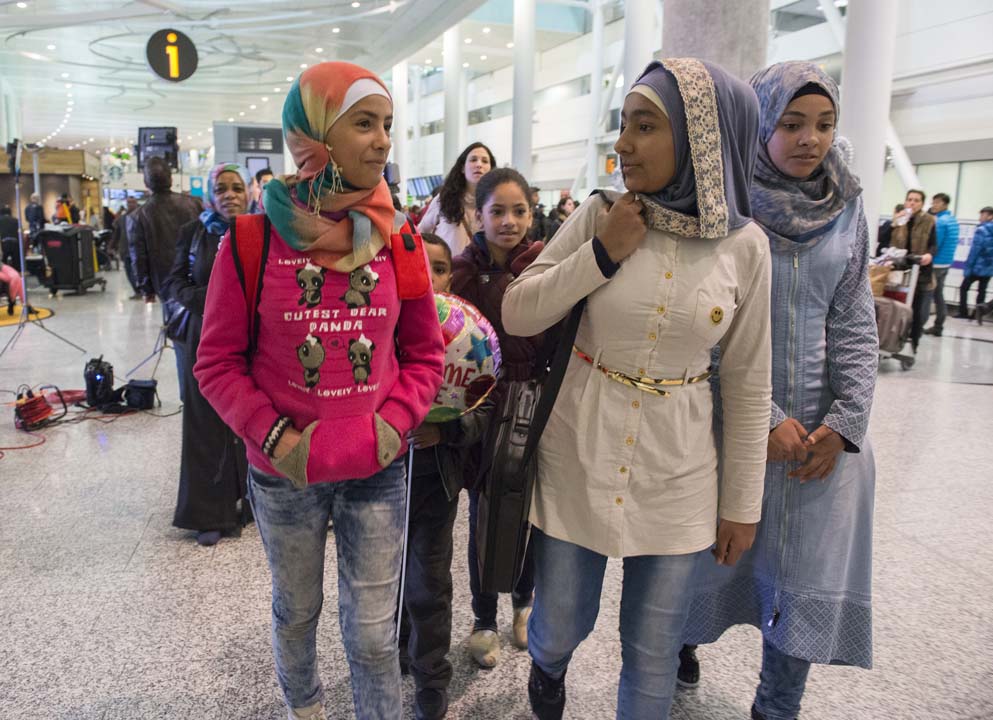Federal politics 2015: The year in 12 chapters
It was a year dominated by Trudeau, but darkened by identity politics and economic uncertainty
Macleans Magazine’s Ottawa and Montreal bureau head shots at Third Floor York studio in Ottawa December 12, 2013.
Share

How many Canadian prime ministers has Queen Elizabeth II met in her long reign, which began in 1953? How many countries will be bound together by the Trans-Pacific Partnership—Canada among them, if the new Liberal government signs on—to create the world’s biggest free-trade zone? How many seats in the three Prairie provinces did Justin Trudeau’s Liberals manage to win in the Oct. 19 federal election?
The answers: the Queen is now on her 12th Canadian PM, with one surname appearing twice on the roster; there are 12 putative TPP partners, but how many sign and how soon remains in question; and, as you might by now have guessed, there are 12 Prairie Liberal MPs, with seven hailing from Manitoba, four from Alberta, and just one—Ralph Goodale, as usual—from Saskatchewan. (For comparison’s sake, that’s just one more than the 11 ridings the Liberals took by sweeping suburban Mississauga and Brampton on Toronto’s western edge.)
For our purposes here, however, the only round dozen we care much about is the months of the calendar. Highlighting just one story for each month in 2015 might be as good a way as any to make sense of what was a watershed year in Canadian federal politics.
January: We realized that a weak economy would make matters tricky for the incumbent PM
When Bank of Canada governor Stephen Poloz surprised markets by cutting interest rates on Jan. 21, he also changed a fundamental calculation for political strategists of all partisan stripes. Poloz authoritatively signalled that the plunge in oil prices was going to continue hurting the Canadian economy for months to come. He mused about other sectors rebounding, but exactly when and how robustly seemed unclear. In other words, Stephen Harper, who wanted to run for re-election as a great economic manager, was going to have to somehow sell that message in an uncomfortably shaky economy.
February: We wondered if a high-profile resignation signalled the end of a Tory era
John Baird’s resignation from his post as foreign minister at first seemed shocking, and then, on second thought, maybe the sort of thing that should have been expected. After all, the Harper government was gearing up to try to win its fourth election and extend its run in power into a second decade. Voters often grow tired of regimes that last that long. Perhaps Baird, who stepped into the private sector at age 45, wouldn’t be the only big name to slip away before the election. Sure enough, he was followed over the next few months by heavy hitters including Peter MacKay and James Moore. Harper would have to try to win with a depleted lineup.

March: We learned that issues of identity, not just economics, would matter
In a hard-hitting speech delivered in Toronto, Liberal Leader Justin Trudeau lashed out at the Conservative government over Harper’s policy against face veils—especially the niqab worn by a minority of Muslim women—being allowed when immigrants take the Canadian citizenship oath. “We all know what is going on here: It is nothing less than an attempt to play on people’s fears and foster prejudice, directly toward the Muslim faith,” he said. Conservatives, notably Jason Kenney, fired back. But Trudeau had served notice he would run, not just on economic policies touted as a boon for middle-income families, but also on emotionally charged matters of rights and identity.
April: We discovered that a certain trial was big, fresh political news after all
Many jaded Ottawa insiders thought the revelations of the Mike Duffy trial were all out of the way in advance. Everybody already knew, after all, that Stephen Harper’s former chief of staff, Nigel Wright, had paid $90,000 out of his own pocket to Duffy, to allow the suspended senator to repay doubtfully claimed expenses. But the trial turned out to be a big deal anyway, and bad news for Harper. Benjamin Perrin, once the in-house counsel for the PMO, suggested that Ray Novak—Wright’s replacement as Harper’s chief of staff and the PM’s close confidante—knew about Wright cutting that controversial cheque for Duffy. And so the scandal cut still deeper into Harper’s inner circle, dangerously close to the man himself.

May: We remembered that provincial elections sometimes jolt the federal scene
When Rachel Notley’s NDP won Alberta’s May 5 election, ending the Conservative dynasty, they made history—and federal waves. Namely, an orange wave of sorts, as voters across the country seemed jolted into considering the possibility of electing Tom Mulcair as the country’s first NDP prime minister. Mulcair’s federal alternative bounced significantly in the polls. Suddenly, the prospect of Mulcair, not Trudeau, emerging as the top contender to replace Harper seemed very real. A three-way race was on.
June: We almost miss a vow to change the very way Canada elects federal MPs
When Justin Trudeau unveiled a sweeping democratic-reform policy package in an event at Ottawa’s historic Chateau Laurier, he vowed to implement, if he was elected, no fewer than 32 promises. They ranged from banning partisan federal ads, to updating the way question period works, to appointing equal numbers of women and men to his cabinet. But the most potent ingredient in this complicated reform recipe was his pledge to make the 2015 election the last in which Canadian would vote in the traditional way—with the top candidate becoming MP and the rest getting zilch. He didn’t specify what system would replace the so-called “first past the post” system. Since his Oct. 19 victory, the electoral reform push has emerged as arguably the most controversial Liberal policy.
July: We’re reminded of how the Senate is freighted with political meaning
After a meeting with Saskatchewan Premier Brad Wall, Stephen Harper stepped out to revise his stance on the Senate. He vowed not to appoint any more senators while the upper chamber remained unreformed—inadvertently reminding the country that he had, in fact, appointed 59 in the past, including several notoriously dubious choices. He criticized the Liberal position on making the appointments non-partisan and the NDP’s call for abolishing the Senate. Yet the main upshot of Harper’s stand was to highlight his own failed attempts to update the Senate and, worse still, that he had named senators who wound up in disgrace.
August: We are plunged into the longest election campaign in memory
Stephen Harper visited Governor-General David Johnston at Rideau Hall on Aug. 2 to launch an 11-week campaign—longer than the 2008 and 2011 races combined—toward an Oct. 19 election date. The Conservative calculation in making it a marathon was multifaceted, but it boiled down to Harper’s prediction that the election would not be “a popularity contest.” In other words, he knew Canadians might like Justin Trudeau and Tom Mulcair better, but he guessed that, given plenty of time to think about it, they would decide they trusted him more.
September: We sense that a court ruling has darkened the election campaign’s tone
On Sept. 15, a Federal Court of Appeal panel dismissed the Harper government’s appeal of an earlier ruling that found the government’s policy against allowing face coverings at citizenship ceremonies unlawful. The Conservatives swiftly said they would appeal to the Supreme Court of Canada, and Harper later said he would go even further—not only passing a law to ban face-covering veils during citizenship oath-taking, but also, perhaps, following Quebec’s controversial lead, banning the niqab in the federal public service. Identify issues would largely dominate the rest of the campaign, as the Tories went so far as to propose an RCMP tip line for “barbaric cultural practices.”

October: We learned again that when voters swing, they sometimes really swing
At its outset, the 2015 campaign looked like the tightest three-way race in Canadian history. However, with the Conservatives, Liberals and NDP all looking like plausible winners, a majority for any one of them seemed a very long shot. But Trudeau turned in week after week of solid debate performances, upbeat images from the hustings, and no-slip-ups message discipline. As they have before—in watershed elections like those in 1984 and 1993—Canadian voters swung hard. The result: a resounding Liberal majority and the apparent dawn of Canada’s second Trudeau era.
November: We watch as a traditionally staid ceremony is converted into a political celebration
Elections are emotional and exhausting. In their aftermaths, politicians in power get down to work. In Canada, the swearing-in of a new cabinet at Rideau Hall generally marks the shift from retail politics, aimed at the Canadian public, to real power, the purview of official Ottawa. But the appointment of Trudeau’s first cabinet was entirely different. A carnival atmosphere prevailed as about 3,000 people thronged to the grounds of the Governor General’s residence to cheer Trudeau’s arrival with his new, gender-balanced ministry, walking with him in the sunshine. Would the campaign-style ebullience never end?

December: We witnessed a brilliant political event, but with a tinge of doubt
In a year of remarkable political stagecraft by Justin Trudeau, nothing could beat his greeting of 163 Syrian refugees, arriving at Toronto’s Pearson International Airport to begin new lives in Canada. Video of Trudeau helping some into new winter coats drew international praise. For those who had followed the refugee story closely, though, those heartwarming images couldn’t be accepted uncritically. Trudeau had run for election on a promise to bring 25,000 refugees to Canada by the end of 2015. After winning power, he found that impossible, dropping the target to 10,000 by year-end, with another 15,000 to be brought here in the first two months of 2016. Even those new targets seemed dauntingly difficult to achieve. Was this all a harbinger of how other Trudeau campaign promises might have to be amended in the months and years to come?

The end of a year is a traditional time to reflect on how we live. Is your existence really so circumscribed by politics that you’re inclined to compared the 2015 survey above with those of past years? If that’s the way it is, and can’t be helped, then here are links to my previous 12-chapter reviews for 2014, 2013, 2012, 2011 and 2010.